Rhinoplasty is a popular cosmetic procedure chosen by many women to enhance facial appearance and create harmonious facial features. Whether you’re considering undergoing rhinoplasty or simply want to understand the procedure better, Rhinoplasty Experience will provide you with a clear and comprehensive overview, from its definition to the most common surgical approaches to rhinoplasty used today.
What is rhinoplasty?
Rhinoplasty is a cosmetic surgical procedure performed on the nose to improve its shape, size, height, and overall symmetry. By making precise adjustments to the nasal structure, surgeons can create a more balanced, natural-looking result that complements the proportions of the face.
In some cases, rhinoplasty surgery is not only to improve the appearance but also to help correct breathing issues or repair deformities caused by trauma or congenital conditions.
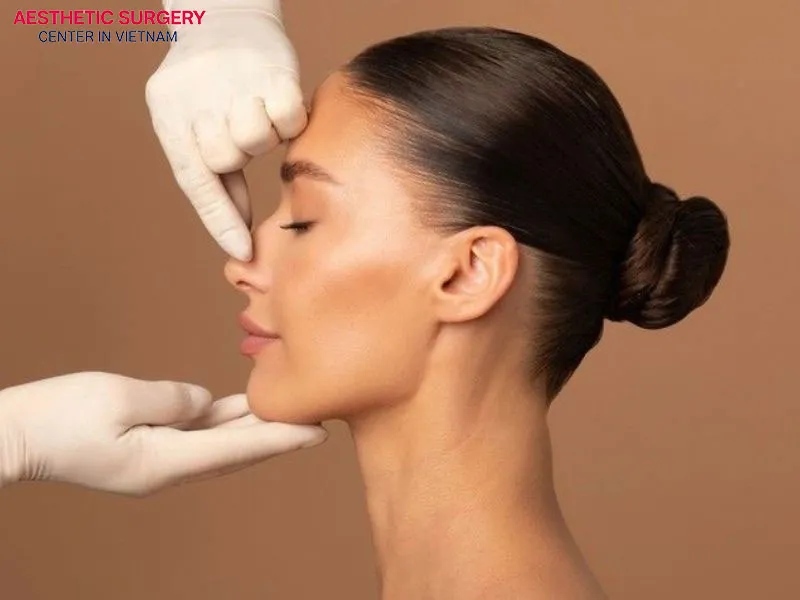
Now that you understand what rhinoplasty is, let’s explore its key benefits and the various advantages it can offer.
What does rhinoplasty do?
Rhinoplasty is not only a popular cosmetic enhancement, but it also delivers a range of benefits that go far beyond appearance. Here are some of the most notable advantages of undergoing rhinoplasty:
- Enhances appearance and boosts self-confidence: A well-shaped, proportionate nose helps create a more refined and attractive facial profile. This improvement often leads to greater confidence in social interactions and makes a strong impression, both professionally and personally.
- Improves breathing function: For individuals with issues such as a deviated septum or narrow nasal passages, rhinoplasty can correct internal nasal structures, making it easier to breathe, leading to better sleep quality and overall respiratory function.
- Helps relieve chronic sinus issues: Some patients suffer from chronic sinusitis due to nasal structural abnormalities. Rhinoplasty can help realign the sinus drainage pathways, reducing inflammation and minimizing the recurrence of sinus infections.
- Corrects congenital defects or trauma-related deformities: Rhinoplasty can effectively reconstruct noses that have been misshapen due to birth defects or physical injury, restoring both appearance and nasal function.
- Considered favorable in physiognomy: In Eastern cultures, the nose is often seen as a symbol of wealth and career success. A high, straight, and balanced nose is believed to not only enhance facial beauty but also bring good fortune and positive energy in business and life.
Who is a good candidate for rhinoplasty?
Although rhinoplasty is a popular cosmetic procedure, it is not suitable for everyone. Let’s take a look at some of the ideal candidates who are eligible for surgery to improve their nasal appearance.
Individuals aged 18 and above
Rhinoplasty should only be performed when the facial bone structure has fully developed, typically after the age of 18. At this stage, the nasal framework is stable, which helps ensure optimal surgical results and reduces the risk of post-operative deformities. Additionally, those over 18 are generally mature enough to understand the procedure and make informed decisions based on their personal aesthetic goals.
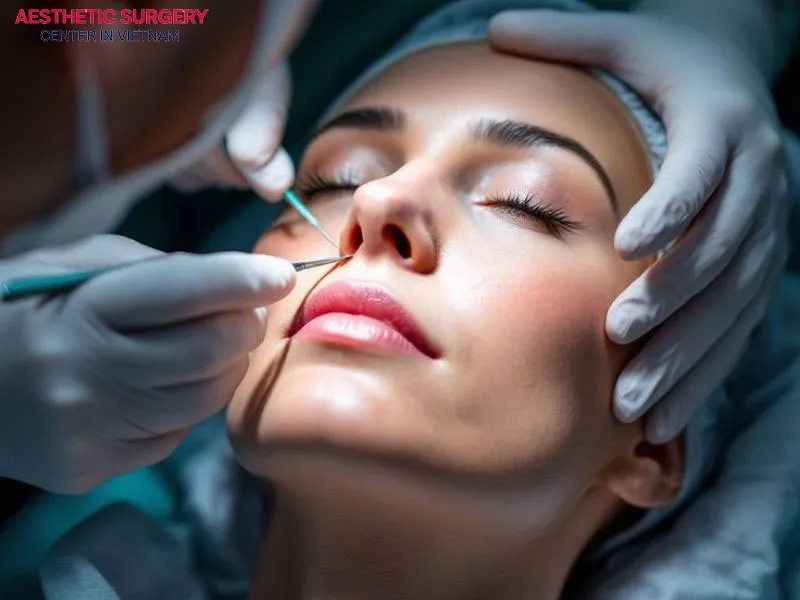
People with an unattractive nasal structure
Those with flat, crooked, asymmetrical noses, bulbous tips, or dorsal humps that create facial imbalance are good candidates for rhinoplasty. Surgery can refine the nasal shape to be more defined, proportionate, and in harmony with other facial features. In certain cases, it can also help improve breathing by correcting a deviated septum.
Individuals who want to enhance their appearance
If you are dissatisfied with your appearance, especially the shape or size of your nose, rhinoplasty can be an effective solution. A well-proportioned nose can make you more attractive, help you stand out, and leave a positive impression on others.
People in good health
While rhinoplasty is not considered a highly complex procedure, it still requires the patient to be in stable health. Those without chronic illnesses such as heart disease, respiratory disorders, or diabetes will face fewer risks during anesthesia and are more likely to recover smoothly after surgery.
What are the different surgical approaches to rhinoplasty?
There are different surgical approaches to rhinoplasty available today, but the following three are the most popular options:
Cartilage-wrapped rhinoplasty: This method involves using a silicone implant to raise the nasal bridge while wrapping the tip of the nose with autologous cartilage, often harvested from the ear or nasal septum, to create a soft, natural-looking S-line or L-line shape. Wrapping the nasal tip with the patient’s own cartilage helps reduce the risk of complications such as implant extrusion, redness, or nasal tip thinning. This procedure is ideal for individuals with a low nasal bridge, thin nasal skin, or minor post-surgical deformities or trauma.
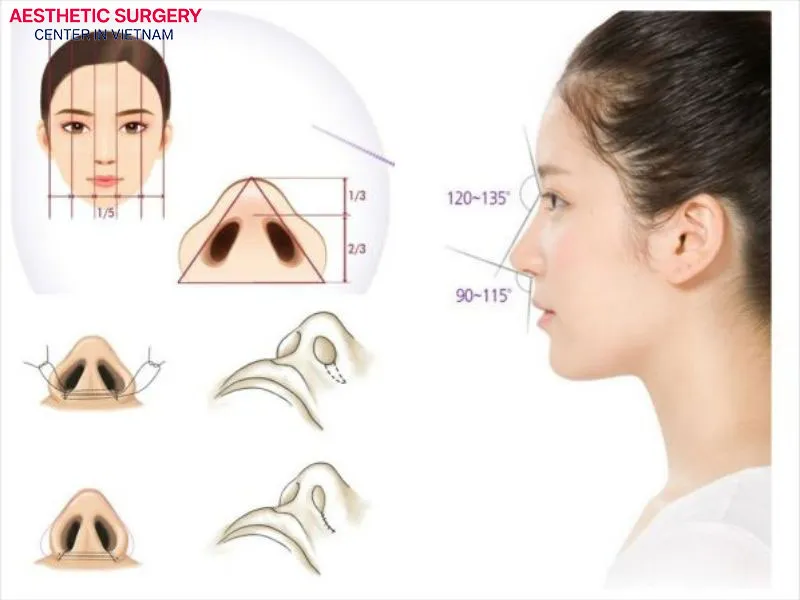
Semi-structural rhinoplasty: Semi-structural rhinoplasty modifies part of the nasal framework without completely reconstructing the entire bone and cartilage structure. It is best suited for those who already have a defined nasal shape with mild imperfections, such as a low bridge or wide alar base, especially in cases with thick nasal skin and strong nasal support. This is the optimal choice if you seek moderate enhancement but do not want to intervene deeply, with lower costs and risks.
Structural rhinoplasty: Structural rhinoplasty is a comprehensive surgical procedure that reconstructs the entire nasal framework, including the bridge, tip, columella, and alae, using a combination of autologous and synthetic cartilage. This method is ideal for correcting severe deformities such as a flat, crooked, collapsed, or previously injured nose. It results in a high, refined, and well-balanced nasal shape that aligns harmoniously with the facial proportions. Because of the use of natural cartilage, this method offers long-lasting results with high biocompatibility.
How you prepare before rhinoplasty?
To ensure that your rhinoplasty procedure is safe and delivers the best possible results, thorough preparation is essential. Here are some important pre-surgery guidelines you should follow:
- Schedule a consultation with your surgeon and undergo necessary medical tests such as blood pressure measurement, blood tests, and a cardiovascular check-up to assess your overall health condition.
- Avoid medications that can thin the blood and anti-inflammatory drugs, as they may increase the risk of excessive bleeding.
- Stop smoking completely at least one week before surgery to lower the risk of infection and promote faster wound healing.
- Prepare yourself mentally by relaxing and getting rest 2–3 days before the procedure to ensure your body is in optimal condition.
Standard medical rhinoplasty procedure
Rhinoplasty requires a meticulous and precise process to ensure natural-looking, long-lasting results. A standard, medically approved rhinoplasty procedure typically includes the following steps:
Step 1: Consultation and nasal assessment
First, a specialist will examine the nasal structure and identify any aesthetic or functional issues. Based on the assessment, the doctor will recommend the most suitable procedure and provide a visual simulation of the expected outcome to help the clients better understand the results after surgery.
Step 2: General health check-up
Before undergoing surgery, clients must complete basic medical tests such as blood tests, blood pressure measurement, and possibly ultrasound imaging if necessary. This step ensures that the clients are medically fit for surgery and helps reduce risks associated with anesthesia.

Step 3: Measuring, sketching, and determining the nasal shape
The surgeon will measure the proportions between the nose, forehead, and chin, then sketch the nose shape based on the client’s facial structure and personal preferences. This step ensures precision and aesthetics during surgery.
Step 4: Anesthesia and sterilization of the surgical area
Before surgery begins, local anesthesia will be administered to minimize pain and keep the patient comfortable throughout the procedure. The nose and any donor areas for cartilage (e.g., ear or rib) will be thoroughly disinfected to maintain a sterile environment and prevent post-operative infections.
Step 5: Harvesting autologous cartilage
Depending on the case, the doctor may extract cartilage from the ear, nasal septum, or rib. The cartilage is then sterilized and sculpted to fit the nasal tip, reducing the risk of allergic reactions or infections while enhancing biocompatibility with the body.
Step 6: Performing cartilage-wrapped rhinoplasty
A small incision is made at the columella to create space for the implant. A silicone implant is inserted to raise the nasal bridge, while autologous cartilage is wrapped around the nasal tip to provide a soft, natural look and feel.
Step 7: Post-operative care instructions and follow-up appointments
After surgery, the doctor will provide detailed guidelines on how to clean and care for the nose, as well as dietary and activity recommendations. Follow-up appointments will be scheduled for suture removal and to monitor the healing process.
Rhinoplasty Before – After
To have a more general view of the rhinoplasty procedure and see the results of clients who have successfully undergone surgery and achieved their desired nose shape, let’s take a look at some of the following images:
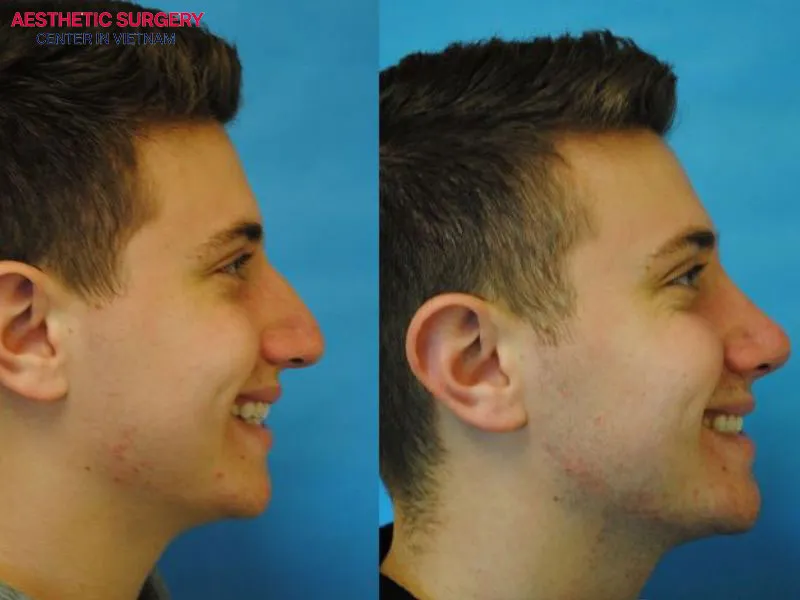
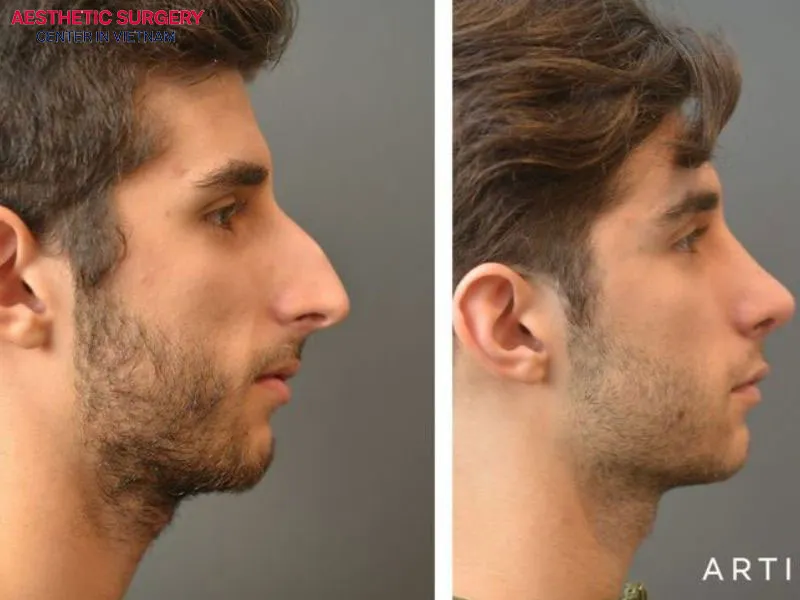
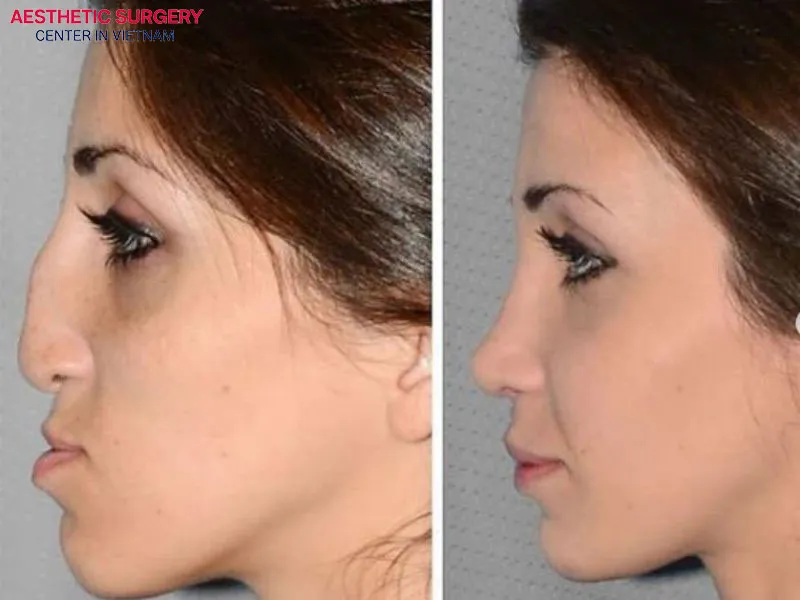
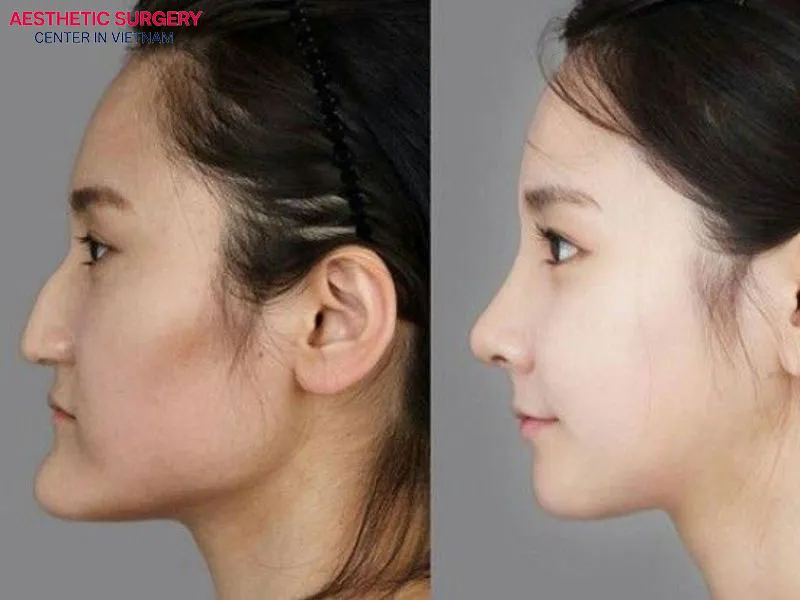
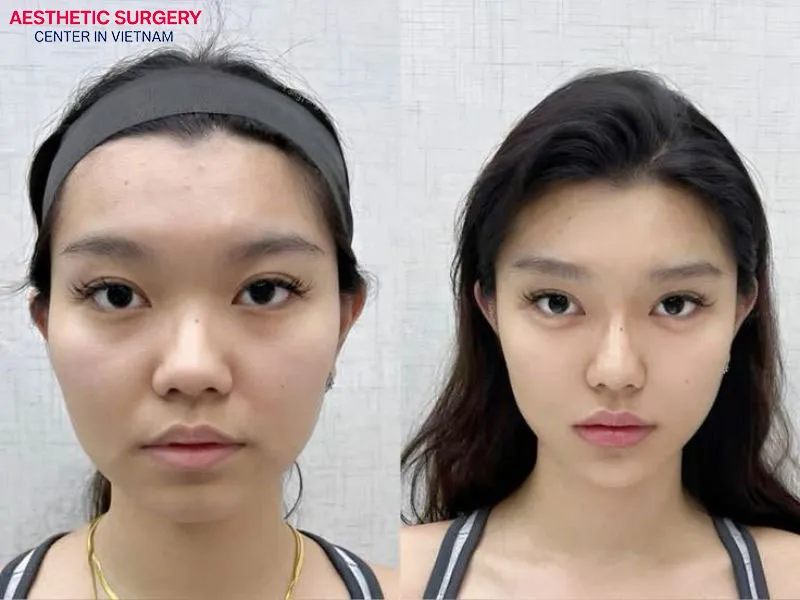
Post-rhinoplasty care for a faster and safer recovery
Proper post-operative care is a crucial factor that directly affects the final shape and long-term success of your nose after surgery. Although modern rhinoplasty procedures significantly shorten recovery time, you still need to follow these essential aftercare tips to ensure the best outcome.
- Cold and warm compresses: Within the first 48–72 hours, gently apply cold compresses around the nose area, such as under the eyes and the cheeks, to reduce swelling, avoid placing them directly on the nose. You may alternate with warm compresses to help disperse bruising.
- Keep the nasal area clean and dry: Use cotton swabs and saline solution to clean around the nose, avoid letting water touch the wound, even when washing your face or hair. Refrain from using skincare products or cosmetics on the area until it has fully healed.
- Take medications and attend follow-ups as prescribed: Only take the medications provided by your doctor, do not skip doses or take additional medicine without approval. Also, follow the schedule for suture removal and post-op check-ups so your surgeon can monitor your recovery and address any potential complications early.
- Avoid strenuous activity and mechanical pressure: For the first 2–4 weeks, avoid physical activities such as working out, running, or swimming, as these may place stress on your newly operated nose. Do not wear glasses, sleep on your side, or apply any pressure to the nose with your hands.
- Avoid foods that may trigger inflammation or scarring: Refrain from consuming chicken, seafood, sticky rice, water spinach, alcohol, and spicy food for at least 2–4 weeks, depending on your healing progress. Instead, eat foods rich in vitamin C and zinc, and drink plenty of water to speed up recovery.
- Monitor for unusual symptoms: If you experience prolonged bleeding, severe swelling, fever, or unusual nasal discharge, contact your surgeon immediately for timely medical intervention.
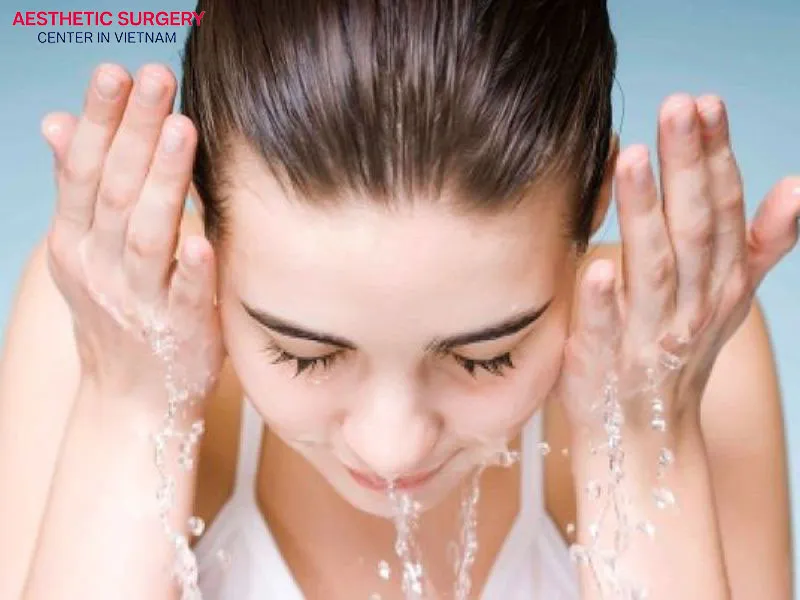
Aesthetic Surgery Center in Vietnam – Trusted rhinoplasty provider in Vietnam
If you’re looking for a reputable, safe, and professional rhinoplasty clinic in Vietnam, Aesthetic Surgery Center is the ideal choice. With a nationwide network of clinics and international-standard client care, it has become a trusted destination for thousands of clients both locally and internationally.
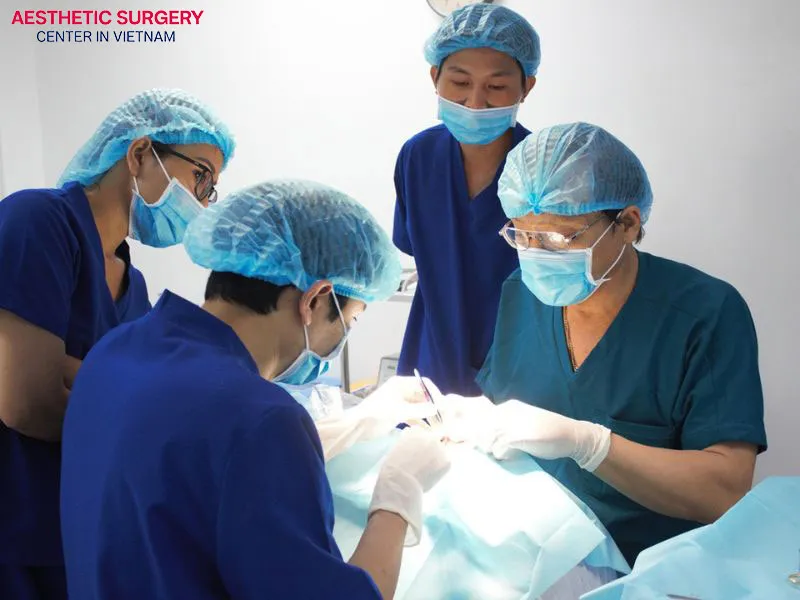
Aesthetic Surgery Center is known for its team of highly qualified surgeons, all of whom have received formal training in plastic and reconstructive surgery. With years of experience in procedures such as structural rhinoplasty and cartilage-wrapped rhinoplasty, the doctors here ensure both safety and beautiful, natural-looking results.
Aesthetic Surgery Center also invests heavily in facilities and technology, using advanced rhinoplasty procedures like premium biological cartilage implants and a closed-loop surgical process that complies with Ministry of Health regulations. Operating rooms are strictly sterilized to minimize the risk of post-surgical infection.
In addition, Aesthetic Surgery Center frequently offers attractive monthly promotions, allowing clients to enjoy high-quality services at affordable prices. For international clients, the center provides all-inclusive support, from airport pick-up and hotel arrangements to complimentary health screenings and lab tests.
With a solid reputation and top-tier service quality, Aesthetic Surgery Center is proud to be one of the most trusted names in rhinoplasty in Vietnam, giving you complete peace of mind when choosing where to enhance your appearance.
After learning about what rhinoplasty is, how the procedure works, and how to properly care for your nose post-surgery, you should now have a clearer and more comprehensive understanding of this cosmetic method. If you’re considering enhancing your nose, visit Aesthetic Surgery Center or contact the hotline at 0911 582 499 for a personalized consultation and a premium beauty experience.







Comment on the post